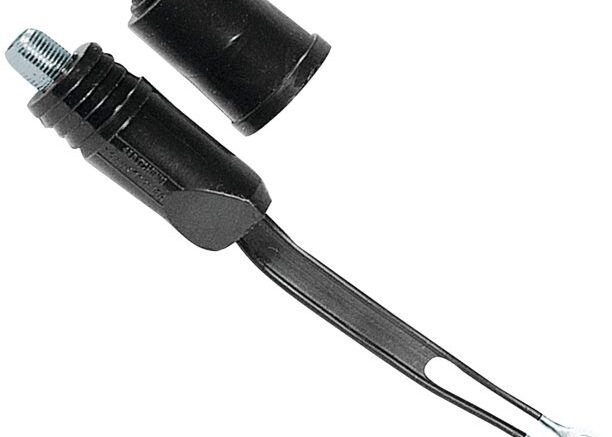The thing you see at the top of this picture is a “balun.” I mean, it really is. There are a lot of things out there that are called “baluns” and they aren’t. But that’s how English works. That’s why we dial phone numbers, wind up windows, call the first minute “the top of the hour,” and all of that. The language is full of little reminders of the way things used to be. But that’s not important right now.
A balun — as I said, a real balun — is a device that converts a balanced signal to an unbalanced one. It lets antennas, which are roughly similar to that flat wire that everyone used to use, send their signals to the coaxial cables we use now. Unless your antenna is 50 years old, there’s a balun somewhere. It’s converting the signal from the antenna to 75 ohms unbalanced. But what does this really mean?
Clearing this up first
Before I start: there are going to be some real bona fide engineers who will want to pick this article apart for extremely picky reasons. And I’ll tell ya upfront: they’re right. I’m skipping over the masters-level engineering discussion and trying to present something that average folks can understand. I encourage the Ph.D crowd to comment below and let’s have that more technical discussion at the end.
The part of the balun that connects to the antenna is “balanced.” The coaxial cable side is “unbalanced.” Now let’s talk about why. If you know anything about electricity, you know that electrical signals tend to travel in big loops which we call “circuits.” The power flows over two wires. In one wire is power coming FROM the power source, while the other wire has power returning TO the power source if not used. If you don’t have a complete circuit, the power doesn’t flow.
However, when we are talking about the tiny tiny bits of electricity in antenna signals, things are a bit different. It’s possible for you to have a signal travel down a cable and be effectively absorbed by whatever is receiving it. There’s no need to have a complete circuit, just one properly constructed wire which carries the signal in one direction.
We call that old-school flat antenna wire “balanced” because, well, it is. Current goes down and then back up as if it were part of a much more powerful electrical system. We call coaxial cable “unbalanced” because there’s only one line. Signals can travel in two directions, and current can travel up one direction while signal travels back down the other direction. It’s all due to the unique engineering of the coaxial cable.
One conductor. Just ignore the other bit of metal. Really.
The center piece of wire in the middle of a coaxial cable is the only part that carries signal or current. Yes, there is another piece of metal… the wire wrap around the white dielectric foam. But that’s not part of a circuit. It’s shielding that works two ways. The shielding keeps stray signals out, and it also acts as a barrier between the white dielectric foam and the outside world. That white foam is there so that the signal can literally expand out to fit it, while the current (if needed for an amplifier for example) stays in the center of the wire. I know, it sounds really like it shouldn’t work. But it does.
If not for that outer shield, the signal would try to keep expanding in unpredictable ways and potentially get lost. So that’s why the shield is there. A lot of people (including myself at one point) assumed is was the return path of the circuit, but there’s no crossover between the shield and the center. If there were, that would be a short circuit and the cable wouldn’t work.
Get baluns and a whole lot more from Solid Signal
Solid Signal is your home for thousands of hard-to-find electronic accessories. We have parts for antennas and all sorts of broadcast and reception equipment. Check out the great selection at SolidSignal.com. Still have questions? Call the experts at 888-233-7563! We’re here for you during East Coast business hours. If it’s after hours, fill out the form below! We’ll get back to you, usually within one business day.





